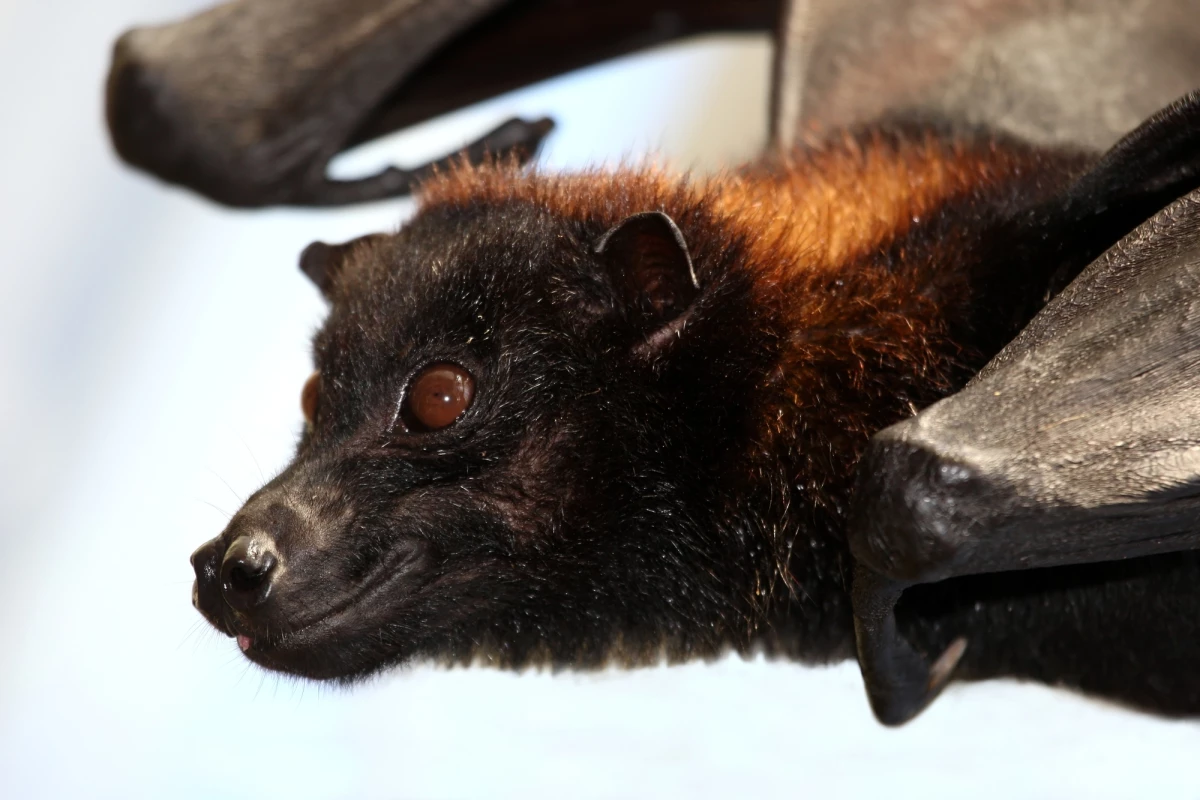Ebola, Marburg, SARS, MERS, and now the new coronavirus Covid-19, all share one thing in common – they are thought to have originated in bats. A new study, led by scientists at UC Berkeley, is suggesting the mammals’ uniquely fierce immune system encourages viruses to reproduce and when the viruses cross over into other animals or humans they can be incredibly fatal.
From the frightening hemorrhagic fevers that appeared in the second half of the 20th century, to the more recent appearances of novel coronaviruses, bats seem to be the natural reservoir for many concerning viral outbreaks. From a perspective of species volume, it is not necessarily a surprise bats are the source of more dangerous viruses than any other mammal.
There are more than 1,400 individual species of bat, spanning almost every corner of the world and comprising around 20 percent of all mammal species. Bats have very few natural predators and live extraordinarily long in relation to their size. Some bats have been found to live up to 40 years.
However, bats are outnumbered by rodents in terms of volume of species and sheer numbers. And while rats certainly spread a number of diseases, they are not generally known for incubating entirely new viruses (rats may have traditionally been blamed for the black plague in medieval Europe but research has shown the real cause of that infamous epidemic was parasites such as fleas and ticks, not rats that carried them).
So what is it about bats that allows them to harbor such virulent viruses without actually getting sick?
"The bottom line is that bats are potentially special when it comes to hosting viruses," says UC Berkeley disease ecologist, and co-author on the new study, Mike Boots. "It is not random that a lot of these viruses are coming from bats. Bats are not even that closely related to us, so we would not expect them to host many human viruses. But this work demonstrates how bat immune systems could drive the virulence that overcomes this."
In order to effectively evolve and spread, a virus can’t kill its host too quickly. The faster a virus replicates and infects a host, the quicker its host will die, so the most effective viruses are the ones than can maintain that precarious balance.
To understand how viruses can evolve in the presence of different mammal immune systems, the new study exposed two different bat cell lines to a hemorrhagic fever virus. A cell line from an African green monkey was also exposed as a control.
The differences between the bat and monkey immune responses were significant. The monkey cell line was rapidly overwhelmed by the replicating virus but the two bat models displayed swift protective immune responses.
The Australian black flying fox cell line demonstrated the most effective immune response to the virus, rapidly producing molecules called interferon-alpha. These immune signaling molecules are released by cells when they are under attack from a foreign substance. They signal to other cells to heighten anti-viral defenses, and actively disrupt viral replication.
What the researchers observed was a distinct slowing of viral replication in the bat cell lines. However, these particular bat interferon responses also allowed the viral infections to persist in the mammals for extended periods of time.
"Think of viruses on a cell monolayer like a fire burning through a forest. Some of the communities – cells – have emergency blankets, and the fire washes through without harming them, but at the end of the day you still have smoldering coals in the system – there are still some viral cells," explains Cara Brook, first author on the new study.
This means a virus can increase its replication rate inside a bat without killing its host, essentially enhancing its virulence to a level that would be profoundly destructive in other organisms.
“This suggests that having a really robust interferon system would help these viruses persist within the host," says Brook. "When you have a higher immune response, you get these cells that are protected from infection, so the virus can actually ramp up its replication rate without causing damage to its host. But when it spills over into something like a human, we don't have those same sorts of antiviral mechanism, and we could experience a lot of pathology."
But why do bats have such fundamentally powerful immune systems?
Intense physical activity in any mammal results in the release of reactive molecules called free radicals. Organisms need to effectively mop up these damaging molecules and the immune system plays a primary role in that process.
Bats, being the world’s only flying mammal, have evolved a remarkably efficient immune system to manage the acute inflammatory damage caused by the high metabolic rate needed to fly. Generally speaking, in mammals fast metabolism and heart rate equals shorter lifespans while slower metabolism and heart rate results in longer lives. Rodents of equivalent size to bats mostly live to ages of two years. Bats on the other hand, can live 30 or 40 years, despite having metabolic rates double that of rats.
It is hypothesized this heightened ability of bats to rapidly suppress inflammation enables the mammal to vigorously fly. And one of the key processes underpinning this rapid anti-inflammatory response is the speedy release of interferon-alpha. Brook notes this enhanced immune response seen in bats would be damaging if replicated within a human body.
"Some bats are able to mount this robust antiviral response, but also balance it with an anti-inflammation response," says Brook. "Our immune system would generate widespread inflammation if attempting this same antiviral strategy. But bats appear uniquely suited to avoiding the threat of immunopathology."
Although this doesn’t explain how the viruses seem to frequently jump from animals to humans, the research does offer compelling insights into how, and why, bats seem to be incubating these incredibly virulent viruses.
The new research was published in the journal eLife.
Source: UC Berkeley




